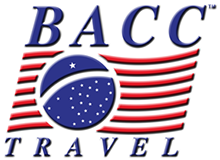Salvador is the capital of the state of Bahia. It’s an important city of 2,211,539 people. Salvador was founded on March 29, 1549, on the shores of the bay of All Saints (“Baia de Todos os Santos”) and was Brazil’s first capital, a position it kept for 214 years (1549-1763).
Bahia has influences from Portugal, Africa and Asia. A great part of its colonial architecture is still preserved making the city the largest collection of Baroque art in South America. Churches, monuments, old houses, and squares maintain the traditions of this ancient city. The Pelourinho, (called “Pelô” by the locals), as the old part of the city is called, is an incredibly well-preserved quarter of colonial-style buildings that is currently a bustling area of restaurants, art galleries, craft stores, and wondrous churches.
In addition to its colonial past, Salvador is also famous for being an African cultural center in Brazil. For five centuries, blacks and whites have lived together in this city, their cultures melting into one: Bahia’s unique culture. That culture can be seen in different aspects: folk dances, craftwork, festivals, religious practices, and cuisine.
Salvador’s coastline covers an area of more than 386 square miles (or 1,000 square km) encompassing 56 islands in the bay. You can find some of the most magnificent beaches of the Brazilian coast in Bahia. The local tourism authorities recommend Salvador as one of the best places for water sports, such as windsurfing, in the Americas.






